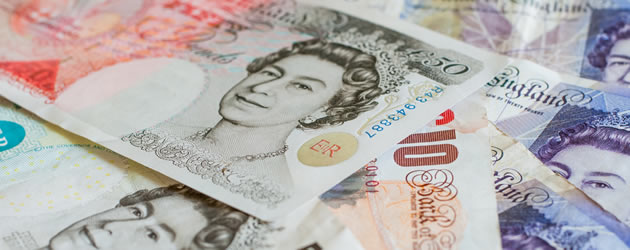- Pound recovered strength as gap between ‘Remain’ and ‘Leave’ narrowed – YouGov poll supported market optimism
- UK Services PMI markedly bettered forecast – Pound Sterling rallied on sign of robust economic growth
- Euro trended lower on weaker-than-expected Eurozone PMIs – Growth across the currency union remained discouraging
- Non-Farm Payrolls forecast to boost GBP/USD exchange rate – Lower levels of employment could deter imminent Fed interest rate hike
Bullish UK Services PMI Bolstered Pound Sterling (GBP) Exchange Rate
Despite unexpected weakness in the latest UK Construction PMI the Pound (GBP) regained ground against rivals on Thursday. While growth in the construction sector slowed from 52.0 to 51.2, the sector’s more limited weight within the domestic economy muted the reaction to the figure. Investors were also encouraged by a YouGov poll which indicated that the ‘Leave’ and ‘Remain’ campaigns were neck-and-neck, somewhat easing earlier concerns that support for ‘Brexit’ was drawing ahead. Consequently Pound Sterling returned to an uptrend against many of the majors, despite persistent worries over the outlook of the UK economy.
Demand for Pound Sterling was boosted further on Friday morning on the back of a stronger UK Services PMI. Bettering expectations of a modest uptick from 52.3 the measure instead clocked in at a bullish 53.5, suggesting a far more robust level of growth in the sector. Naturally this offered some reassurance with regards to the health of the UK economy, increasing optimism that referendum uncertainty has not overly dragged on domestic growth.
Softer Eurozone PMIs Weighed on Euro (EUR) Demand
Confidence in the Euro (EUR) was dented by weaker-than-expected Producer Price Index figures for April. As prices slipped from -4.1% to -4.4% on the year this seemed to bode badly for the inflationary outlook of the Eurozone, raising concerns as to the effectiveness of the European Central Bank’s (ECB) raft of easing announced in March. With scepticism growing over the effectiveness of central bank policy, the inflation prospects of the currency union remain skewed to the downside.
Markets were also discouraged from buying into the single currency on Thursday afternoon thanks to the latest ECB policy meeting. While policymakers remained in ‘wait and see’ mood as anticipated, opting not to make further stimulus adjustments at this juncture, the Euro nevertheless weakened. ECB President Mario Draghi expressed a continued commitment to meeting the 2% inflation target, although the lowered inflation forecasts of the central bank raised the possibility of the quantitative easing program being extended further in future.
The appeal of the common currency continued to weaken on Friday morning as the latest raft of Eurozone Services and Composite PMIs proved generally disappointing. Of particular concern was an unexpectedly severe dip in the growth of the Italian service sector, which slowed from 52.1 to 49.8 in May. With worries over the currency union still heightened, this added support to the Pound Sterling to Euro (GBP/EUR) exchange rate.
US Dollar (USD) Exchange Rate Trended Cautiously ahead of Non-Farm Payrolls
As has been the case for much of the week, Thursday’s US data proved somewhat mixed. Signs from the jobs market looked generally positive, however, as the Challenger Job Cuts Survey revealed a far sharper decline in redundancies and the ADP Employment Change measure came in as forecast at 173,000. This raised market expectations for the latest Non-Farm Payrolls report, in turn boosting the odds of the Federal Open Market Committee (FOMC) opting to raise interest rates sooner rather than later.
Nevertheless, demand for the US Dollar (USD) has been somewhat muted ahead of this potentially pivotal ecostat due to investor caution. If employment and wage conditions continued to tighten in May this could be enough of a push for the Fed to imminently hike rates, although any disappointment could derail the possibility. It could prove to be something of a tight call, as researchers at Danske Bank noted:
‘A strong jobs report will support the Fed’s view that the labour market continues to tighten and increase the possibility of a summer hike further. We estimate non-farm payrolls increased 160,000 in May in line with consensus, but below the 3M average of 200,000, as we have indicators suggesting employment growth was to the weaker side in May.’
Should markets take greater confidence from this result, however, the Pound Sterling to US Dollar (GBP/USD) exchange rate is likely to see a fresh slump ahead of the weekend.
Current GBP, EUR, USD Exchange Rates
At the time of writing, the Pound Sterling to Euro (GBP/EUR) exchange rate was trending higher around 1.2930, while the Pound Sterling to US Dollar (GBP/USD) pairing was making gains in the region of 1.4425. Meanwhile, the Euro to US Dollar (EUR/USD) exchange rate was trending narrowly at 1.1157.



